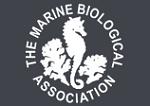APHOTOMARINE
An educational resource dedicated mainly to the photography
and diversity of marine life that can be found in coastal waters
and intertidal areas of Great Britain and Ireland by David Fenwick.

Species to identify
- Carnsew Pool on Saw wrack 1
Marine flatworm
Species to identify
- Carnsew Pool on Saw wrack 2
Marine flatworm
Species to identify
- Carnsew Pool on Saw wrack 3
Marine flatworm
Species to identify
- under microscope 1
Marine flatworm
Species to identify
- Carnsew Pool - where found 1
Small specimen with two pairs of small eyes, specimen found after washing a plant of permanently submerged Saw wrack, Fucus serratus, in seawater. Specimen found at Carnsew Pool, Hayle, Cornwall. 19.07.15.
Sea lettuce, Ulva sp. and Ceramium were growing epiphytically on the piece of Saw wrack that was washed, so it is unknown if the flatworm came from one of those algae or not; or from the bryozoan Bowerbankia or many of the hydroids that covered the material. It must be noted that there must have been over 100 of these small flatworms found in the sample after washing, along with hundreds of copepods.
Marine flatworm
Species to identify
- from East Pier, Hayle 1
Marine flatworm
Species to identify
- from East Pier, Hayle 2
Marine flatworm
Species to identify
- under microscope greyscale 1
Marine flatworm
Species to identify
- anterior under microscope 1
Marine flatworm
Species to identify
- posterior under microscope 1
Species found in a sample of marine fouling taken from a pontoon at East Pier, Hayle, Cornwall. 07.06.18.
APHOTOMARINE supports open source data recording and sharing for the benefit of wildlife, recorders, research, science and education. The project recommends the following websites and works with the following bodies and organisations.
The Marine Biological Association or MBA, based in Plymouth, is one of the world’s longest-running societies dedicated to promoting research into our oceans and the life they support. Since 1884 the MBA has been providing a unified, clear, independent voice on behalf of the marine biological community.It has a growing membership in over 40 countries.
The National Biodiversity Network or NBN is a charity that supports open source data sharing and recording supporting conservation, science and education. "Why do recorders need open source?". Simply because it supports the core values of wildlife recording and the free use of records and data over a very wide network that includes partners like the Natural History Museum.
The taxonomy used here is based on that of the following database, which is also used by the MBA, NHM and the NBN.
The World Register of Marine Species or WoRMS.

